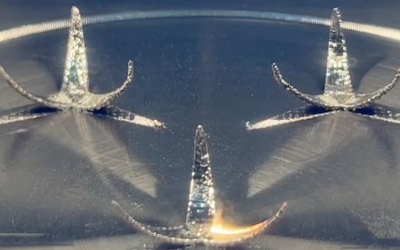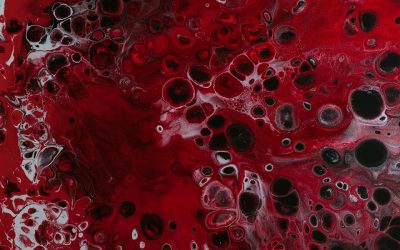Self-healing polymer materials can both greatly enhance product performance and play a key role in sustainable development. Dr. Ming Qiu Zhang of Zhongshan University, having,  together with his colleague Dr. Min Zhi Rong, just published his book “Self-Healing Polymers and Polymer Composites,” discussed with MaterialsViews.com his research into self-healing and other scientific challenges.
together with his colleague Dr. Min Zhi Rong, just published his book “Self-Healing Polymers and Polymer Composites,” discussed with MaterialsViews.com his research into self-healing and other scientific challenges.
What attracted you to science and how did you get to where you are now?
I can’t remember exactly when I got to be interested in science. In my time as a primary school pupil, I was involved in extracurricular activities including assembly of radio sets and model airplanes. The self-made radio and airplanes gave me much fun. Later, the science fictions by Jules Verne showed me the wonderful world full of fantastic machines and organisms. Although it is somewhat difficult to distinguish science from technology, the possibilities of exploring unknown future are so attractive that my career is closely related to doing research.
Were there any strong childhood influences that lead you to this career?
At the age of around 4 or 5, my grandfather presented me a picture book about the journey of a drop of water. It firstly flowed together with friends along a stream, flew towards the sky in response to the call of grandfather sun, changed into vapor, reached very high altitude and enjoyed the beautiful landscape underneath. Suddenly, a piece of dark cloud shielded the sun, and the water drop felt very cool. It had to fall down as rain and splashed in a sea. Then, another interesting journey started…… Thanks to the book, I began to be aware of the fact that there are nice stories behind what we see every day. It is certainly worth spending time to find out these stories.
How did you view science and scientists as a child?
The performance of magicians.
What (or who) have been your biggest influences or motivation?
The lecturer who gave a presentation about optimization method in my middle school, letting me know how to work efficiently and orderly.
What would you have done if you had not taken this career path?
A chef or industrial designer. I enjoy cuisines worldwide and nice-looking products.
What motivated you to choose a career in academia instead of industry?
My experience with industry told me where you have to do your best to follow schedules, no matter whether you like it or not. This is necessary for routine production, but disables free thinking. Comparatively, I have more freedom in the university. I can choose research topics mostly close to my interests.
What got you interested in polymer science as a subject, and how did you develop your current interests in functional materials?
The region where I live, Guangdong province, is a major part of the so-called “world’s factory”. There are many plastics industries with business ranging from raw materials synthesis to injection molding. Accordingly, the demands for R&D support are great. It means many problems with scientific or technical importance need to be solved, which drove me to be involved in the field of polymer science. In the beginning, I was more focused on structural materials, but the situation changed quickly as functional materials turned out to be able to fulfill much more tasks. Development of structural materials possessing built-in functionalities, like self-healing polymers and composites, has become one of my research interests.
How does this work fit into a wider scientific / general context?
As mentioned in our book, Self-healing Polymers and Polymer Composites, self-healing represents the next generation of technology, which helps to greatly improve important performance of products, including, but not limited to, reliability and durability (service life). From the point of view of sustainable development, moreover, self-healing technology will not only be a value-added measure for consumers but also a must for low-carbon economy.
What influence do you believe your work will have?
Our work serves as a timely description of the research achievements of self-healing polymeric materials. With this book new researchers would have an idea of the basic framework for creating new self-healing solutions.
What do you enjoy most about your work?
Self-healing is no longer only related to recovery from psychological disturbances and surgical trauma, but to restoration of materials properties. It means materials are becoming more and more intelligent.
Which of your publications are you most proud of? Which is your favorite piece of your own research?
It is hard to answer these two questions, because each publication or every piece of my research is the result of painstaking labor of my colleagues and mine.
What is the most exciting research paper that you have read recently?
In a recent issue of Nature Communications, British scientists reported that logic gates for digital devices can be derived from bacteria and DNA. The finding might eventually lead to biological computers.
What are your short and long term plans?
One of our recent projects deals with preparation of fully biodegradable foam plastics from renewable bio-resources. We hope the technology would be applied for mass production of packaging stuff one day.
What are some of your professional challenges?
To find a balance between funding policy of funding agencies and research interests of mine.
What do you see as the biggest challenges facing the scientific community?
It would be extremely important to re-find out the purpose of scientific research. Satisfying unlimited material desires, or establishing a sustainable society?
What do you see as the rewards and outcomes of solving such challenges?
In case a sustainable society is established, future generations of human beings would be able to live on earth for much longer time.
What is your biggest passion outside of science?
Gathering with family members and friends.
What do you like to do to in your spare time?
Travel and photography. I like to experience life in different places and record the scenes using camera. I have learnt much from what I saw during journey, which in turn enriches my life.
What’s the coolest thing you’ve ever discovered?
When looking at material surface via scanning electronic microscope, I have a feeling of traveling in Lilliput like Gulliver.
What do you see as the most important scientific achievement of the last 100 years?
The discovery of penicillin, which has saved numerous patients’ lives.
What do you think are the greatest challenges facing scientists at the moment?
Working out solutions to the depletion of natural resources are the greatest challenges facing both social and natural scientists. In this context, development of self-healing technology is quite meaningful for polymers, as they are mostly derived non-renewable fossil oil. We have to use the materials wisely, not wastefully.
Where do you see the field of materials science in 10 years time?
The boundaries among structural materials/funct
ional materials/devices might be blurred. In a sense, the situation resembles the Stone Age, but of course the materials are far more advanced.
Finally, what should scientists aspire to?
Help to make a better life for human beings, but not the other way round.

















